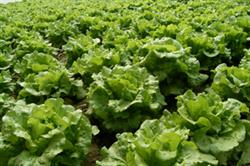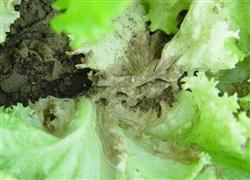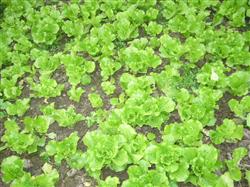Fertilizer requirement characteristics and fertilization skills of heading lettuce

The characteristics of fertilizer requirement of heading lettuce is a herbaceous plant of Asteraceae lettuce, which is suitable for slightly acidic clay soil or soil with rich organic matter and strong ability of water and fertilizer conservation. The growth cycle of heading lettuce can be divided into germination stage, seedling stage, rosette stage and heading stage. It is generally believed that every 1000 kg lettuce needs to absorb 3.7kg N, 1.45kg P and 3.28kg K. Heading lettuce grows rapidly, likes nitrogen fertilizer, and absorbs less fertilizer at the initial growth stage. When it enters the heading stage 70-80 days after sowing, the nutrient uptake increases sharply. In one month of the heading period, the nitrogen absorption can account for more than 80% of the whole growth period. The absorption of phosphorus and potassium is similar to that of nitrogen, especially the absorption of potassium is not only large. And it lasts until the harvest. Phosphorus deficiency at seedling stage had the greatest effect on growth, and phosphorus deficiency at heading stage would affect lettuce heading. The lack of potassium during the heading period seriously affected the leaf weight. Fertilization techniques the amount of fertilizer applied per mu of heading lettuce during the whole growth period is 25003000kg of farm manure (or 35000kg of commercial organic fertilizer), 14017kg of nitrogen (N), 68kg of phosphate (P205) and 1113kg of potassium (K20). Organic fertilizer is used as base fertilizer, nitrogen and potassium fertilizer is divided into base fertilizer and topdressing, and phosphate fertilizer is all used as base fertilizer. Mixed application of chemical fertilizer and farm manure (or commercial organic fertilizer). The basic fertilizer applied 25003000kg / mu of farm manure (or 350kg / mu of commercial organic fertilizer), 4kg of urea, 13kg of diammonium phosphate, 7kg of potassium sulfate, and 20kg of calcium nitrate per mu of calcium-deficient soil. Topdressing at rosette stage: urea 6kg / mu, potassium sulfate 5kg / mu. Topdressing at the initial stage of heading: 912kg of urea and 6kg of potassium sulfate per mu. Topdressing in the middle stage of heading: 6kg of urea and 5kg of potassium sulfate per mu. Extra-root topdressing can be foliar sprayed with 0.2% potassium dihydrogen phosphate solution for 2 or 3 times during the heading period. In the case of soil calcium deficiency, 1% calcium nitrate solution can be sprayed on the leaves of the rosette stage for 3 consecutive times, once every 7 days, and stop spraying at the end of the rosette stage. Protected cultivation can increase the application of carbon dioxide gas fertilizer.
- Prev

Several common diseases of lettuce and their control methods
Lettuce produced in greenhouse in winter is prone to a variety of diseases. Several common diseases and control measures of lettuce are summarized as follows: Sclerotinia sclerotiorum mainly harms the base of the stem, the disease is yellowish brown to brown water stains at the beginning, and then extends to the whole stem. cause the stem to rot or develop upward to cause leaf rot, and finally the plant withered.
- Next

Cultivation techniques of lettuce in winter
Varieties were selected to cultivate mid-and late-mature heading lettuce with strong cold resistance. The cultivation date can be planted in solar greenhouse from mid-late November to late January and harvested from the first and middle of January to early March. Fertile sandy loam was selected for seedling breeding, which was fined and made into flat beds. Then apply sifted high-quality manure every 10 square meters.
Related
- Where is it suitable to grow horseradish in China? it is expected to see the middle altitude horseradish in Alishan.
- How to prevent tomato virus disease reasonably? (Control methods included)
- Many people like to plant towel gourd on the balcony. What are the main points of this method and management?
- What crops can chili peppers be mixed with?
- Fertilization techniques and matters needing attention in Tomato
- What are the grafting techniques for peach seedlings in spring?
- Harm and control methods of root swelling disease of Chinese cabbage
- What are the pests of sweet potatoes? How to prevent and cure it?
- Symptoms, causes and Control methods of navel Rot in Tomato
- The cause of "Cucumber rotten bibcock" in Farmers' planting Cucumber and its Control Plan

